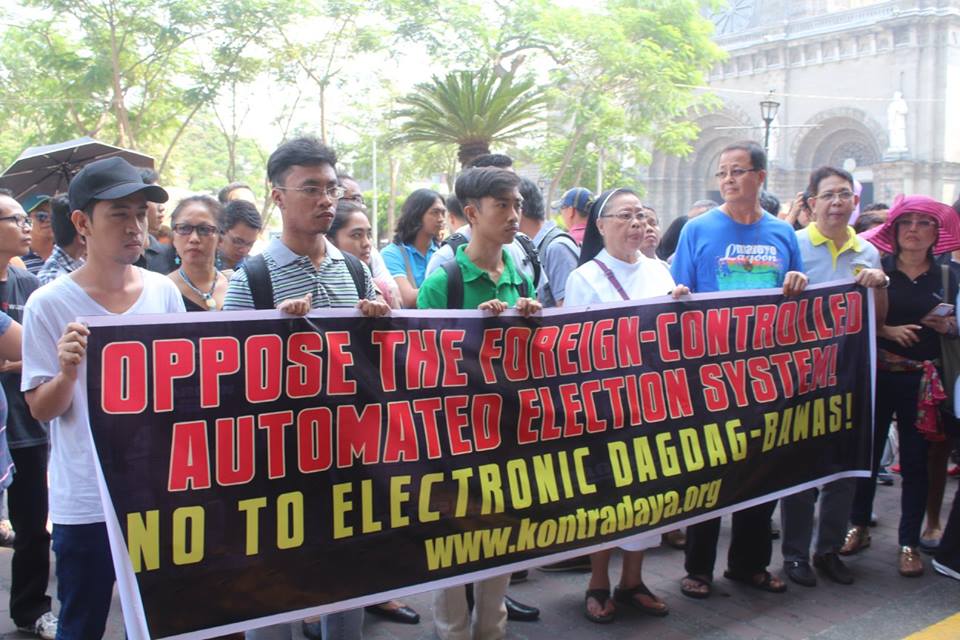Primer: Comelec Resolution No. 9615 on online political advertising #juanvote
via MyComelec.tv – Primer on Resolution 9615
COMELEC Resolution 9615, the implementing rules and regulations for Republic Act 9006 – the Fair Elections Act – ushers in major innovations in the area of regulating online campaign activities. Although the Resolution stops short of complete regulation of all online election-related activities, its provisions on direct on-line advertising represent a significant expansion of the COMELEC’s campaign finance monitoring coverage.
The Resolution also clarifies the question of personal opinions expressed online and whether the backs of buses can be used for campaign posters.
Here are some of the salient points.
Section 1. … Personal opinions, views, and preferences for candidates, contained in blogs shall not be considered acts of election campaigning or partisan political activity unless expressed by government officials in the Executive Department, the Legislative Department, the Judiciary, the Constitutional Commissions, and members of the Civil Service.
With more and more people taking to the internet to express their opinions, it would be practically impossible to police all blogs and micro-blogs searching for partisan political activity. By defining which blogs – by ownership / authorship – are covered by the definition of “campaigning” we limit the scope of needed monitoring while also reinforcing the prohibition against partisan political activity among members of the Civil Service.
Moreover, taking into consideration that the sharing of opinions is a valuable tool towards the formulation of an individual voter’s informed and intelligent decision, this formulation is expected to contribute to the elevation of the quality of political participation among the country’s ‘net-savvy youth.
Political advertising includes matters, not falling within the scope of personal opinion, that appear on any Internet website, including, but not limited to, social networks, blogging sites, and micro-blogging sites, in return for consideration, or otherwise capable of pecuniary estimation.
This formulation refers to both paid-for and donated political advertisements appearing on websites, including blogs, which are defined as follows:
The terms “blog” and “collective blog” refer to websites on which an individual or group of users, respectively, record news, opinions, and information, in varying degrees of regularity. A “micro-blog” refers to a blogging format which allows users to exchange small elements of content – referred to variously as posts or status updates – such as short sentences, individual images, or links to video material uploaded to the Internet.
COMELEC Resolution 9615 also expanded the “green” clause of previous IRRs and acknowledged the recent move of local governments to limit the use of plastics within their territories.
Parties and candidates are hereby encouraged to use recyclable and environment-friendly materials and avoid those that contain hazardous chemicals and substances in the production of their campaign and election propaganda. In local government units where local legislation governing the use of plastic and other similar materials exist, parties and candidates shall comply with the same.
Also in response to new developments in the political campaigning arena, COMELEC Resolution 9615 now provides examples of what would be considered “public spaces,” such that the display of propaganda material in these spaces would be considered unlawful. Section 7, paragraph g provides:
Public places referred to … include any of the following:
1. Electronic announcement boards, such as LED display boards located along highways and streets, LCD TV displays posted on walls of public buildings, and other similar devices which are owned by local government units, government-owned and controlled corporations, or any agency or instrumentality of the Government;
2. Motor vehicles used as patrol cars, ambulances, and other similar purposes that are owned by local government units, government-owned and controlled corporations, and other agencies and instrumentalities of the Government, particularly those bearing red license plates;
3. Waiting sheds, sidewalks, street and lamp posts, electric posts and wires, traffic signages and other signboards erected on public property, pedestrian overpasses and underpasses, flyovers and underpasses, bridges, main thoroughfares, center islands of roads and highways;
4. Schools, shrines, barangay halls, health centers, public structures and buildings or any edifice thereof;
5. Public utility vehicles such as buses, jeepneys, trains, taxi cabs, ferries, pedicabs and tricycles, whether motorized or not;
6. Within the premises of public transport terminals, such as bus terminals, airports, seaports, docks, piers, train stations, and the like.
This enumeration makes it clear that the use of electronic billboards constitutes unlawful election propaganda and will not merely give rise to a question of whether or not the ad will be counted against the candidates allotted broadcast limits.
Equally important, this provision makes it clear that incumbents cannot allow their images to appear on any part of government vehicles, regardless of whether those vehicles were procured during their incumbency. The same can be said of calendars, inspirational posters, and the like which may sometimes be found in schools, barangay halls, etc., which feature the name, image, or style of the incumbent.
###

